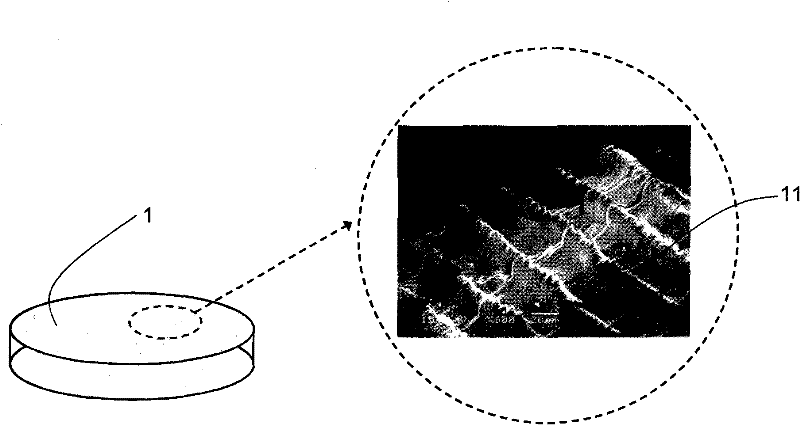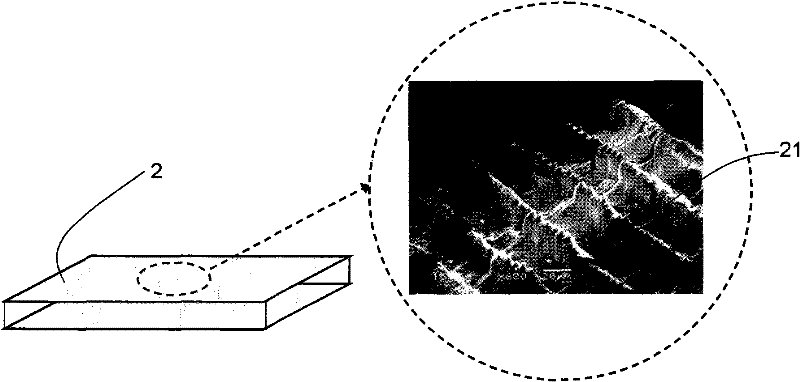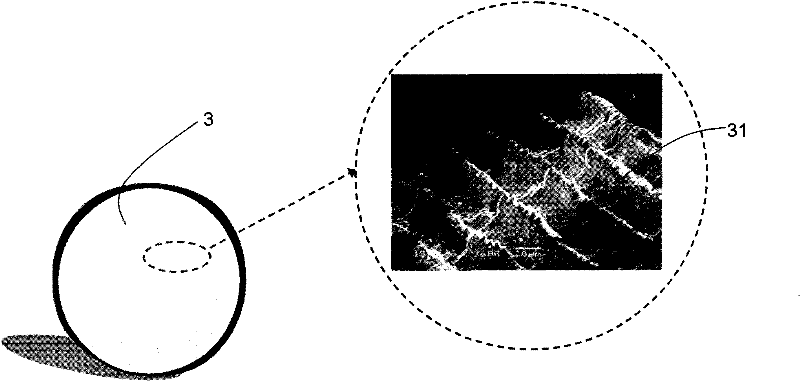Tissue restoration structure derived from fish scales
A tissue repair and fish scale technology, applied in medical science, prosthesis, etc., can solve problems such as insufficient oxygen permeability and burden on patients' eyes, and achieve the effect of simple treatment steps.
- Summary
- Abstract
- Description
- Claims
- Application Information
AI Technical Summary
Problems solved by technology
Method used
Image
Examples
Embodiment 1
[0062] Preparation of decellularized fish scales
[0063] After obtaining about 200 grams of fish scales, immediately wash them at least three times with secondary deionized water until they are clean. Then, the cleaned fish scales are subjected to the decellularization step. The decellularization step can use low osmotic pressure to cause cell bursting (hypotonic), detergent (detergent), Triton X-100, sodium lauryl sulfate Sodium (sodium dodecyl sulfate, SDS), protein enzyme inhibitor (protease inhibitor), deoxyribonuclease (DNase) and ribonuclease (RNase) to treat, and then in order to increase porosity and porosity, so reuse Acetic acid treatment of fish scales through the above steps. After the processed material is rinsed at least three times with sterile phosphate buffer solution, it is soaked in phosphate buffer solution, which is decellularized fish scales.
Embodiment 2
[0065] Preparation of decalcified fish scales
[0066] At room temperature, place fish scales in 5% nitric acid solution for 6-16 hours to reduce inorganic components such as calcium phosphate salts inside fish scales, such as hydroxyapatite (HAP), tricalcium phosphate (tricalcium phosphate, TCP)...etc. Then above-mentioned material is soaked in the time of A solution (10% EDTA, 2% nitric acid) at 4 DEG C again for two to three days, during which and continue to change A solution, then with the gradual increase of immersion time, above-mentioned material will be more Further reduce inorganic components such as calcium phosphate salts, such as hydroxyapatite (HAP), tricalcium phosphate (TCP), etc. The material treated by the above steps was soaked in 70% alcohol and stored at 4 °C.
Embodiment 3
[0068] Oxygen Permeability Measurement of Decellularized and Decalcified Fish Scale
[0069] The oxygen permeability (Dk) of the decellularized and decalcified fish scales can be measured using an oxygen permeability meter (Oxygen Permeometer Model 201T; Createch Inc., Albany, CA, USA) at an absolute humidity of 100% and a temperature of 35°C. Measured, the oxygen permeability of the material in the phosphate buffer solution is 48.15×10 -11 (cm2 x ml O 2 ) / (sec x ml x mmHg), wherein the preferred embodiment of the oxygen permeability of the tissue repair structure is 30-130 (cm 2 x ml O 2 ) / (sec x ml x mmHg).
PUM
| Property | Measurement | Unit |
|---|---|---|
| tensile strength | aaaaa | aaaaa |
Abstract
Description
Claims
Application Information
 Login to View More
Login to View More - R&D
- Intellectual Property
- Life Sciences
- Materials
- Tech Scout
- Unparalleled Data Quality
- Higher Quality Content
- 60% Fewer Hallucinations
Browse by: Latest US Patents, China's latest patents, Technical Efficacy Thesaurus, Application Domain, Technology Topic, Popular Technical Reports.
© 2025 PatSnap. All rights reserved.Legal|Privacy policy|Modern Slavery Act Transparency Statement|Sitemap|About US| Contact US: help@patsnap.com



